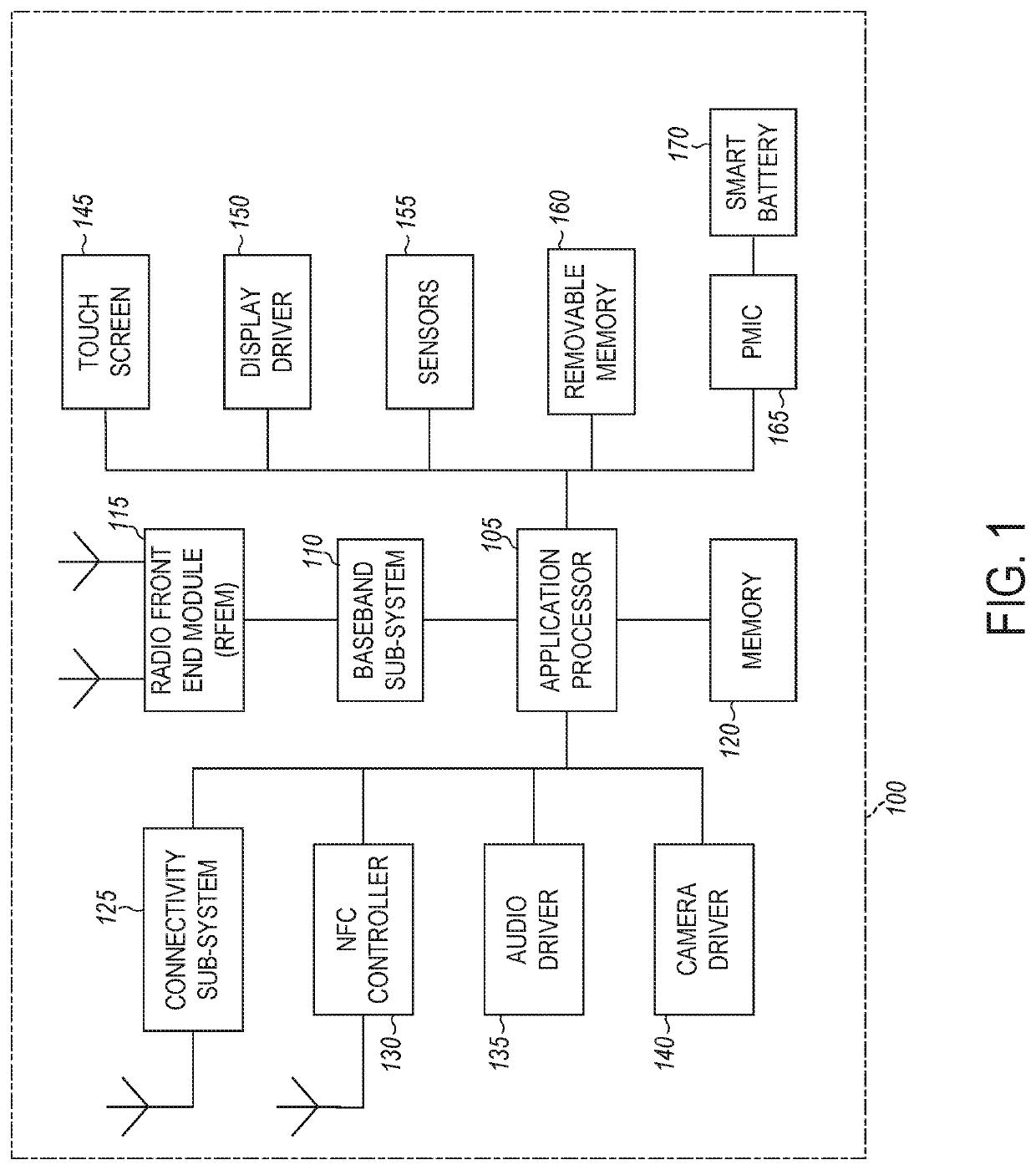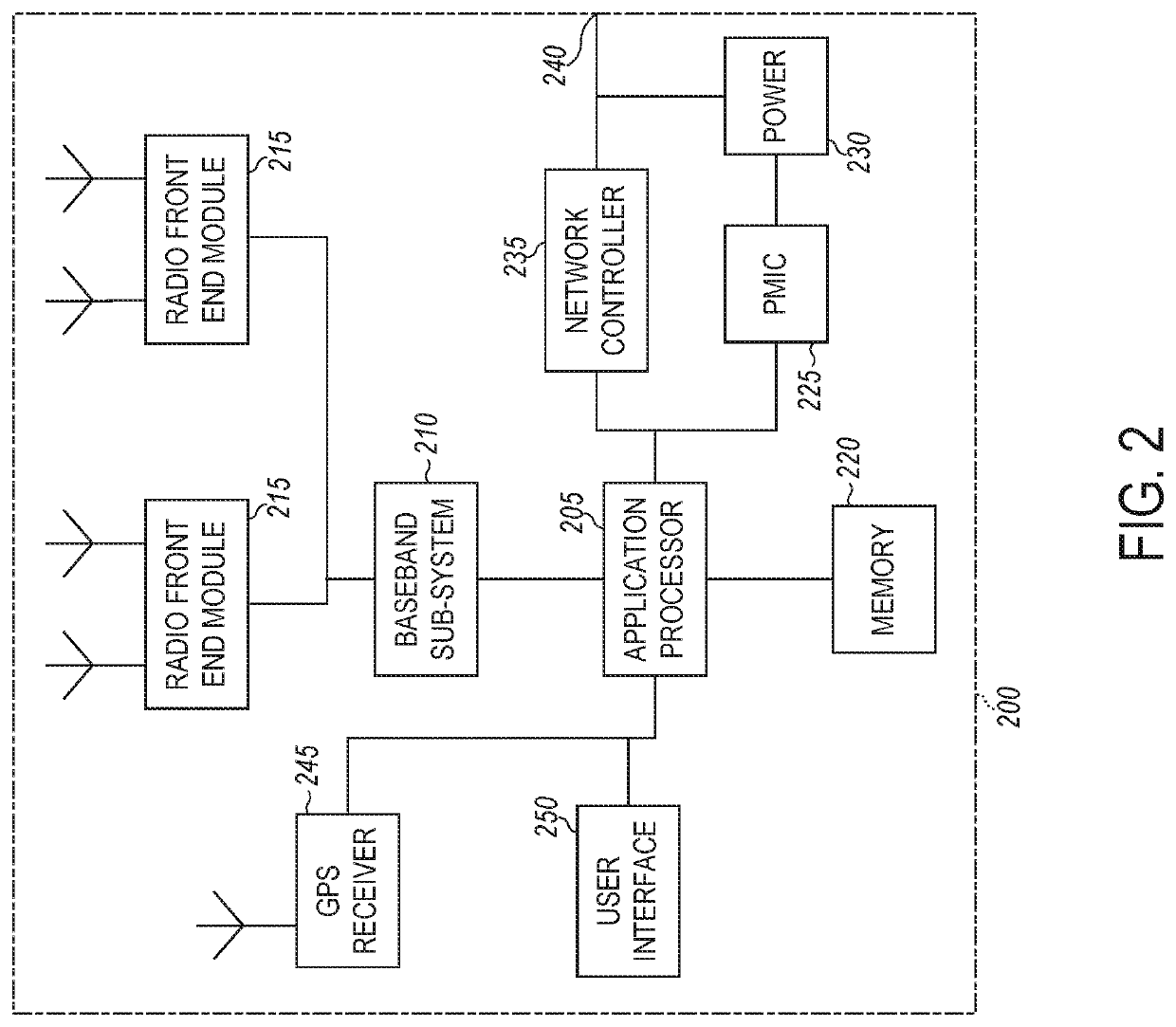Millimeter wave beam tracking and beam sweeping
a technology of millimeter wave beams and beam sweeps, applied in the field of wireless communication, can solve the problems of high power consumption of fully digital receivers relative to analog and hybrid receivers, prohibitively resource intensive, and increase significantly
- Summary
- Abstract
- Description
- Claims
- Application Information
AI Technical Summary
Benefits of technology
Problems solved by technology
Method used
Image
Examples
example 1
[0141 is an apparatus of a wireless communication device, comprising: memory; and processing circuitry configured to: decode priori information from signaling received from a network node; modify a superset of beam criteria stored in the memory, according to the priori information, to obtain a subset of beam criteria; select a spatial region according to the subset of beam criteria for use in a spatial searching operation; and initiate the spatial searching operation in the spatial region.
[0142]In Example 2, the subject matter of Example 1 includes, wherein as part of the spatial searching operation, the processing circuitry is configured to: scan the selected spatial region in an order of directions indicated by the priori information; and determine a direction within the spatial region for use in establishing a directional communication link to a second wireless communication device.
[0143]In Example 3, the subject matter of Examples 1-2 includes, wherein as part of the spatial sea...
PUM
 Login to View More
Login to View More Abstract
Description
Claims
Application Information
 Login to View More
Login to View More - R&D
- Intellectual Property
- Life Sciences
- Materials
- Tech Scout
- Unparalleled Data Quality
- Higher Quality Content
- 60% Fewer Hallucinations
Browse by: Latest US Patents, China's latest patents, Technical Efficacy Thesaurus, Application Domain, Technology Topic, Popular Technical Reports.
© 2025 PatSnap. All rights reserved.Legal|Privacy policy|Modern Slavery Act Transparency Statement|Sitemap|About US| Contact US: help@patsnap.com



